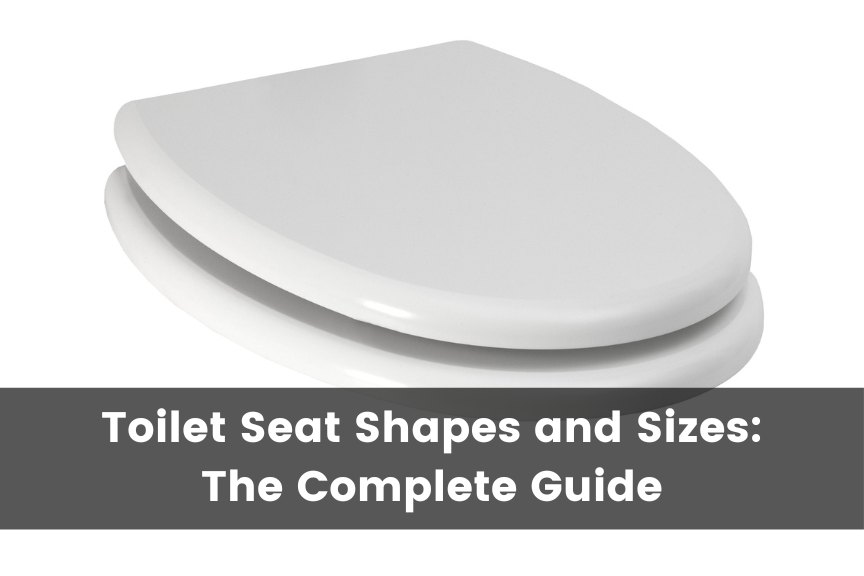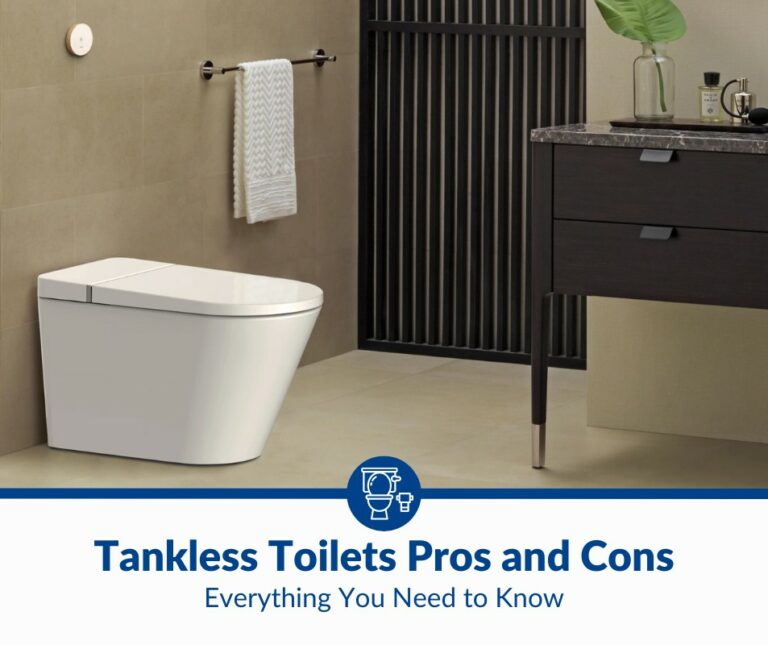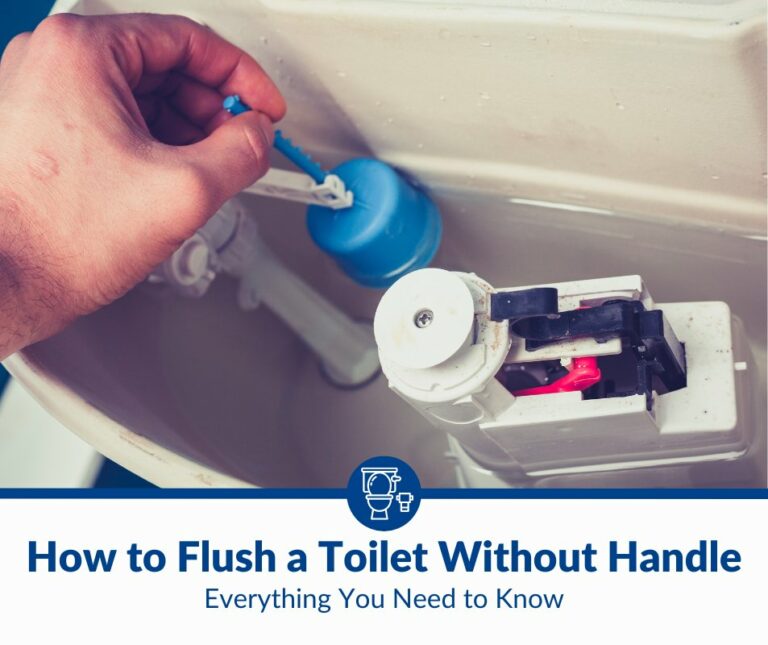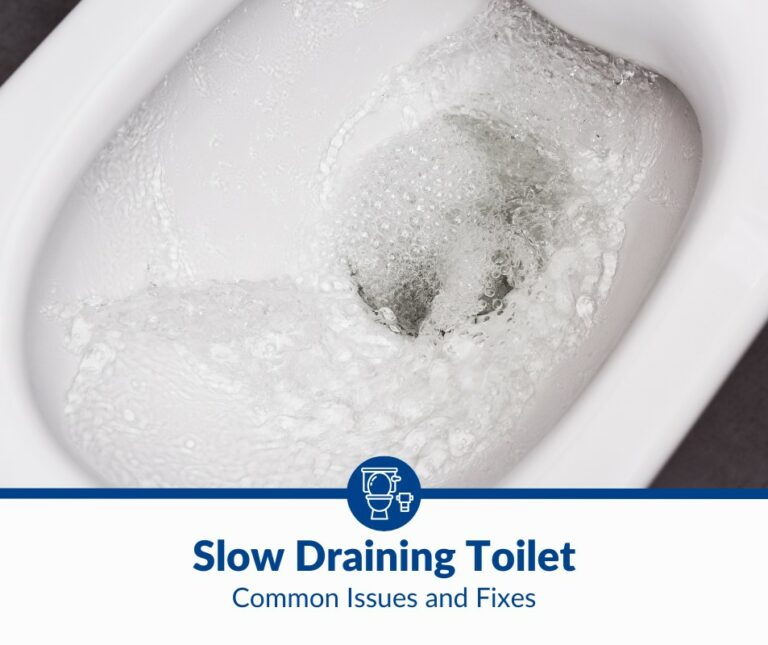Different Toilet Seat Shapes and Sizes (With Examples)
If you’re looking for a new toilet, you’ll notice that they come in endless shapes and sizes.
So, what are the most common toilet seat shapes and sizes?
Toilet seat shapes include elongated, u-shaped, round, rectangular, or hybrid d-shaped. Toilet seat sizes typically range from 16.5 to 18.5 inches (42 to 47 cm). Each shape and size comes with its own comfort level and aesthetic appeal.
In this article, I’ll provide a useful overview of toilet seat shapes and sizes. I’ll discuss these factors in-depth, and I’ll also explain how to measure your toilet seat. Finally, I’ll give you some tips on choosing the best toilet seat for your needs.
An Overview of Toilet Seat Shapes and Sizes
Long gone are the days of the same toilet seat in every home. Nowadays, the diversity of options available to homeowners is astounding. In addition to different toilet seat colors, you can buy them in a wide range of sizes and shapes.
The table below outlines the main toilet seat varieties you can find:
| Toilet Seat Shape | Sizes Available (Length) |
| Elongated | 18.5 inches (47 cm) |
| U-Shaped | 16.5/18.5 inches (42/47 cm) |
| Round | 16.5 inches (42 cm) |
| Rectangular | 17 inches (43.2 cm) |
| D-Shaped | Non-standard |
I’ll elaborate further on each type below. Aside from the different shapes and sizes available, toilet seats also differ in the material used and other features. This article will not cover those features in detail.
Toilet Seat Shapes
Aside from the toilet’s height, one of the major factors affecting comfort when using it is the actual seat. After all, it’s the part that people are in contact with the most. You might assume that the different shapes only change the visual aspect of the toilet, but there’s more to it.
Toilet seat shape can significantly impact your comfort while seated on it, but there are also other factors to consider:
- Some styles allow for easier wiping.
- Some toilet seat styles are considered more hygienic.
- Larger people might find some toilet seat shapes more suitable.
- Small children and those of shorter stature might prefer certain toilet seat styles.
Let’s take a look at the various toilet seat shapes on the market:
Elongated Toilet Seats
One of the more expensive toilet seat designs is the elongated toilet seat. It is also the most common seat shape. The shape is slightly oval, with the front of the toilet looking more pointed compared to other models.
The most common elongated toilet seat length is 18.5” (47 cm), but there are other sizes to suit your needs.
An elongated toilet seat makes the available toilet bowl area larger, making it easier for most people to use. It’s especially popular among those with disabilities and larger folks.
If you’re looking for an elongated-style toilet seat, I recommend the TOTO Transitional SoftClose (available on Amazon.com). It has a hygienic-looking white color and won’t slam because of its soft close mechanism.
Overall, the advantages of elongated toilets include:
- Creates a larger surface area over the toilet bowl
- ADA-compliant (this means it is the best option for disabled persons and the elderly)
- More convenient for people with mobility issues
However, smaller bathrooms might not have enough space to install this type of toilet because, despite the narrow width, it takes up a lot of space.
U-Shaped Toilet Seats
You may be familiar with u-shaped toilet seats as they are commonly used in public restrooms. This toilet seat style is open in the front, and there is a space where the toilet bowl isn’t covered by the seat. You may also find this type of toilet seat labeled as an “open” seat.
U-shaped toilet seats are considered very hygienic because it is easier for both men and women to use them. Men have a lower chance of their genital area touching the toilet seat.
Women have better access for wiping when using this toilet seat, with some industry experts claiming that the u-shaped toilet seat was initially designed for this specific feature. They can be elongated or round, so the length varies.
These are the main selling points of open toilet seats:
- They make it easier for women to wipe
- They are more hygienic
- They fulfill the legal requirements for commercial toilets in many states
- They tend to be cheaper
- They’re elongated or round
Very few people consider installing this style in their homes because it’s usually associated with public restrooms. However, if you’re remodeling a business and considering your options, I recommend the BEMIS Open Front Toilet Seat (available on Amazon.com). Its durable hardware is non-corroding, and it fits most standard toilets.
Round Toilet Seats
The second most popular toilet seat shape is round. While it may be difficult to tell them apart from elongated toilet seats at first glance, you may notice that round toilets don’t have a pointed front end. Round toilets appear more symmetrical and circular than elongated toilets, which are egg-shaped.
If you measure the seat, you’ll find that the length is usually 16.5 inches (42 cm).
The round shape of this toilet seat allows for a more compact design, and it’s a fantastic
option if your bathroom has limited space. It’s also easier for young children to use.
Here are a few pros of round toilet seats that you may consider while shopping:
- The smaller size makes it perfect for nurseries or children’s bathrooms.
- They are great for compact spaces.
- They are typically less expensive than other-shaped toilet seats.
However, it’s an outdated style that most interior designers often avoid. Regardless, if you’re interested in a round toilet seat, I recommend the Kohler Brevia Round Toilet Seat (available on Amazon.com). It comes with easy-to-remove hinges for better access when cleaning, and installation is also easy.
Rectangular or Square Toilet Seats
Now that we’ve covered the most common toilet seat shapes, you may be interested in something slightly different. Rectangular toilets are square or slightly rectangular. Each side of the toilet seat measures 17 inches (43.2 cm).
The angular shape is generally considered stylish and modern, and many interior designers include it as a part of minimalist bathroom decor. The square toilet seat provides more support under the thigh, making it better suited for heavier individuals.
Also, the square or rectangular shape means that the opening in the middle of the toilet seat is larger. This can be an advantage or disadvantage, depending on your body type and preference.
You can usually find this shape of a toilet seat on wall-mounted toilets. Rectangular or square-shaped toilet seats are generally more expensive than other styles.
The following are the benefits of a rectangular toilet seat that you should factor in before committing to a purchase:
- They offer a modern and minimalistic style
- They provide more thigh support
- They have a large middle opening
One problem you might find is that there are no standardized measurements for square or rectangular toilet seats. This means you need to have the exact measurements of your toilet bowl before buying the seat.
The MZTYH Square Toilet Seat (available on Amazon.com) is a beautiful square-shaped toilet seat. It’s easy to install and disassemble and comes with a soft-close lid to avoid scaring household members awake when you use the bathroom in the middle of the night.
D-Shaped Toilet Seats
Lastly, d-shaped toilet seats are a hybrid between round and square toilet seats. The back of the seat is straight, with the front curved like a round toilet. This option is also aesthetically pleasing but relatively affordable.
You should note that d-shaped toilet seats have no standardized measurements, so you should measure your toilet bowl before replacing the seat.
Here are some convincing reasons you might want to consider getting a d-shaped toilet seat:
- They have a stylish and contemporary design
- They are usually compact in size
- They’re an affordable option
If you’re looking for a high-quality d-shaped toilet seat, I recommend the GRIFEMA D-Shaped Toilet Seat (available on Amazon.com). It has adjustable hinges, and the fixing system is durable.
Toilet Seat Sizes
Now that we’ve covered the various toilet seat shapes available, it’s time to take a deeper look at the sizes. I’d like to clarify that this section covers the size of the toilet seat and not the height or measurements of the toilet bowl.
As mentioned above, you can measure a toilet seat’s height by taking a measurement from the middle of the toilet bowl’s front end to the center of the bolt holes. Generally, lengths vary from 16.5 inches to 18.5 inches (42 to 47 cm).
A toilet seat’s width is the measurement from the outermost edge to that on the opposite side.
With round toilets, there is no need to measure the width because of the circle’s symmetry.
If you’re measuring any other toilet seat shape, it’s worth measuring it carefully so that you buy the most suitable size. Other measurements include the following:
- Wall gap. This is the space between the wall and the bolt holes.
- Bolt spread. Bolt spread is how long the space between the two bolts is.
Most toilet seats aren’t manufactured by the same companies that make toilet bowls, even if the two are sold together. Because of that, you’ll find that toilet seat sizes are not exact matches, and the same size fits a few differently-sized toilet bowls.
Measuring Your Toilet Seat
Taking accurate measurements of your toilet seat will help you buy the correct one for your toilet bowl. Luckily, it isn’t that difficult to do.
Here’s what you’ll need to get started:
- A tape measure (a ruler works, too, in a pinch)
- A pen and paper to jot down the measurements (or your phone)
There are four separate measurements you need. Here’s how to take each one of those measurements:
Length
As mentioned earlier, this is the measurement from the front to the back of the toilet seat. Make sure that you place the tape measure precisely in the middle of the seat. Measure the distance from the outermost edge at the front of the seat to the outermost edge at the back of the seat.
Typically, you should get one of three measurements: 16.5 inches, 17 inches, or 18.5 inches (42 cm, 43.2 cm, or 47 cm). You can safely assume that any length measurements that don’t fall into these specific options are either incorrectly taken or non-standard.
The length of your toilet bowl and toilet seat should also match. If this is the first bowl you’re buying, ensure that there is enough space in your bathroom to accommodate the toilet and for comfortable sitting as well.
Width
To measure the width of your toilet seat, you should place your tape measure exactly in the middle of the toilet bowl. Measure the distance between the outermost edge on the left side and the outermost edge on the right side.
If you aren’t sure how to get the exact middle, move the tape measure up and down the seat until you get the highest measurement. Make sure the tape measure is parallel to the back of the toilet. If it’s slightly slanted, your measurements will incorrectly be higher than needed.
The width of your toilet seat is important because it’s a factor that determines how comfortable the toilet will be to use. Remember that you should add enough space for your guest to move around. This usually means they should be provided with half an arm’s length of space on either side when seated.
Bolt Spread
Measuring the distance between the bolts used to attach the seat to the bowl is important because if they don’t match, you won’t be able to install the toilet seat. Some models have adjustable bolts so you can increase or decrease the spread to fit the toilet bowl size you have.
In any case, this is how you should measure the bolt spread on your toilet seat:
- Find the midsection of the bolt holes on the toilet seat.
- Place the tape measure in the midsection of one bolt hole.
- Extend the tape measure to the midsection of the second bolt, ensuring that the tape measure is perfectly parallel to the toilet’s tank.
You might need to measure the bolt spread from a toilet without a toilet seat installed. If so, you should measure the distance between the two bolts or bolt holes on the top of the toilet bowl.
If you’re unsure of the measurements, adjustable bolts are available on some toilet seat models. However, they may be less durable and unsafe.
Wall Gap
To measure the wall gap, measure the area between the toilet seat’s bolts and the wall. This might not be the most important measurement, but it’s always better to check it against any potential purchases to ensure an optimal fit.
The easiest way to take this measurement is by placing the tape measure at the center of one of the bolts and stretching it toward the wall.
Tips on Measuring
Here are a few tips and tricks you can follow to ensure that you get the most accurate measurements:
- Always make sure that your tape measure is level and lined up before jotting down the measurement.
- Take 2 or 3 measurements to ensure accuracy.
- Don’t measure in a dark bathroom. Using adequate light will help you see better.
- Avoid standing or stepping on the toilet because uneven weight distribution will crack the porcelain, which is irreversible damage.
How To Choose the Best Toilet Seat Shape and Size for Your Needs
Unless you’re trying to meet specific code requirements, such as those for public restrooms, choosing a toilet seat shape is not straightforward.
Here are a few factors you will need to consider before making your choice:
- Space: Consider how much space you have in your bathroom. If you’re dealing with a small area, a round toilet seat is your best option. Elongated toilet seats take up a lot more space.
- Mobility: Consider whether you or any of your household members have mobility issues because not all toilet seat shapes are comfortable for people with disabilities. The preferences are subjective, so there is no right answer. However, elongated toilet seats are considered fully ADA-compliant.
- Size of the users: Elongated toilet seats tend to have a larger bowl which isn’t suitable for children and people with shorter stature. Consider the general size of the people who will use your bathroom most frequently.
Once you consider all these factors, you can go through your options and choose the toilet seat that fits your aesthetic preferences and your budget. If you’ve already chosen the toilet seat shape, the size follows logically.
The next step is to decide the height of the toilet, which does not affect the size of your toilet seat whatsoever. Finally, you can pick out the most suitable color.
Final Thoughts
As you can see, toilet seats come in numerous shapes and sizes. Now that you’re armed with the knowledge of each toilet seat’s pros and cons and how to take the right measurements, you can buy the best option for your needs and preferences.
Here are the key takeaways:
- Elongated toilet seats are more spacious and work best for taller people who need more comfort on the toilet.
- Round toilet seats are cheaper and best used for children.
- Square and D-shaped toilet seats are stylish options.
- U-shaped toilet seats are best used in public restrooms and commercial settings.







